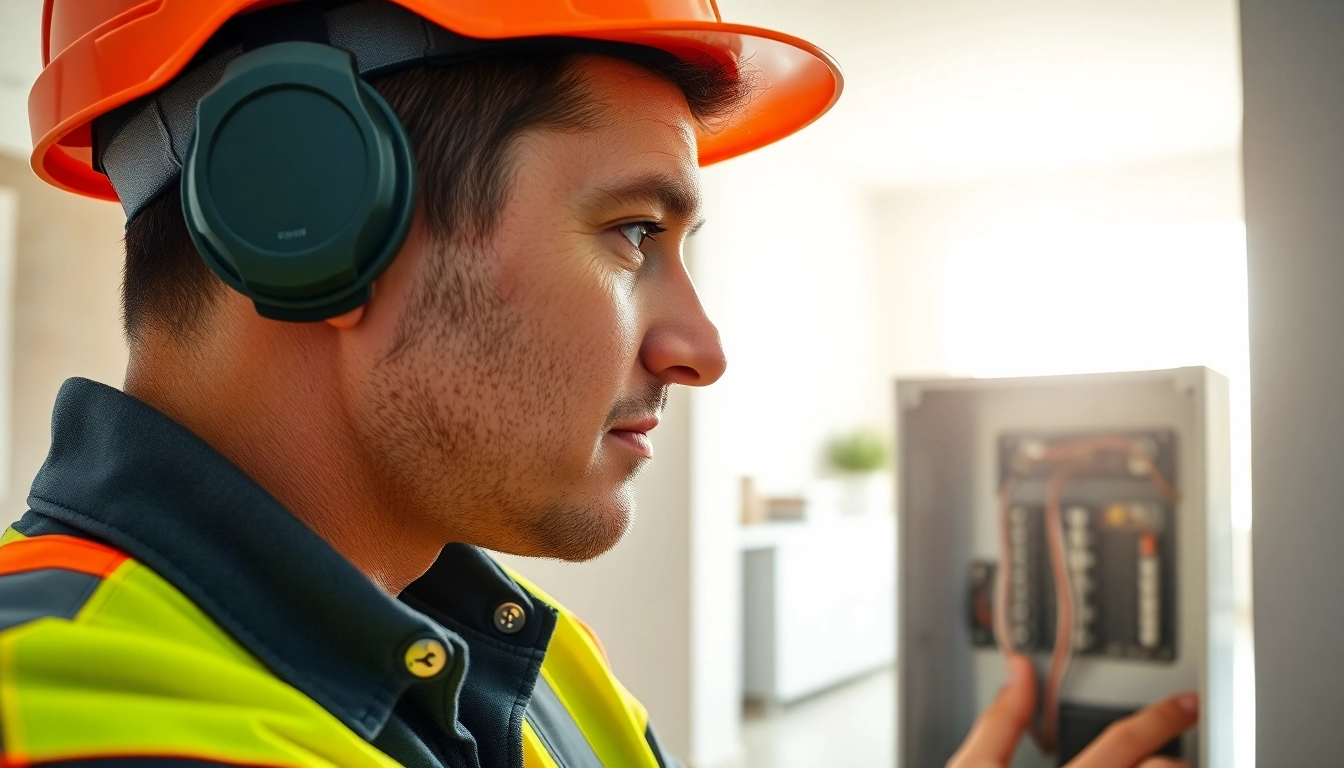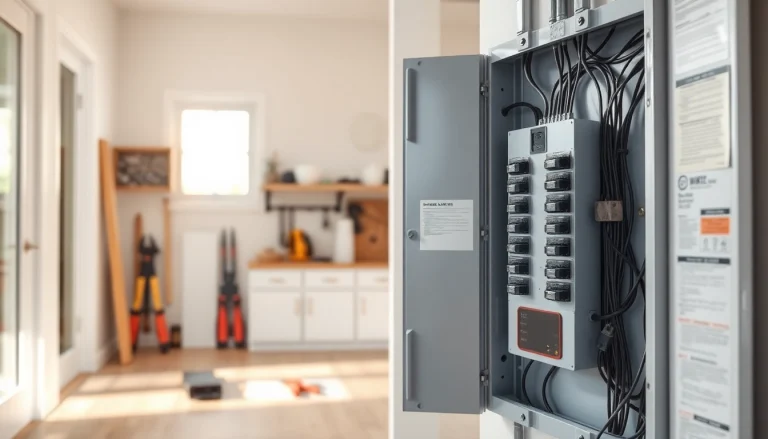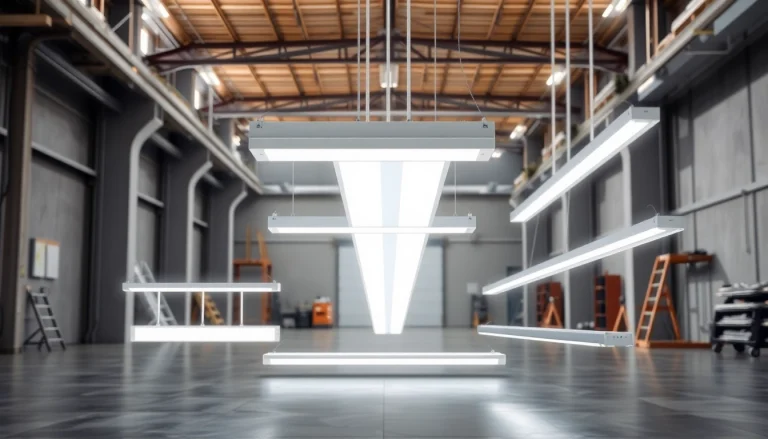Understanding Electrical Panel Upgrades
When it comes to ensuring the safety and efficiency of your home’s electrical system, an Electrical Panel Upgrade is often one of the most crucial improvements you can make. An electrical panel regulates electricity distribution in your home; thus, an upgrade can significantly enhance your household’s electrical capacity and safety. In this article, we will explore the what, why, and how of electrical panel upgrades, helping you make informed decisions about this essential aspect of home maintenance.
What is an Electrical Panel Upgrade?
An electrical panel upgrade involves replacing or enhancing your home’s existing electrical panel to accommodate more circuits and meet the increasing demands for power. The upgrade typically shifts the capacity rating from the standard 100 amps to 200 amps or higher. This modification is pertinent for modern households that utilize more electronic devices, appliances, and energy-efficient systems.
Indicators That You Need an Upgrade
- Frequent Circuit Breaker Trips: If your circuit breakers trip frequently, it’s an indication that your panel may not be handling the electrical load efficiently.
- Old Panel Age: An electrical panel older than 20 years may lack the capacity necessary for modern demands and is often less safe.
- Adding New Appliances: New high-capacity appliances, such as electric vehicles or HVAC systems, often require upgrades to your electrical panel.
- Damaged Wiring or Sparks: Visible wear, damage, or burning smells can indicate deep-rooted electrical issues, necessitating a full upgrade.
- Increased Energy Bills: As appliances require more power, an outdated panel may contribute to elevated energy costs.
- Renovations or Extensions: If you’re extending your home or adding substantial square footage, ensure that your electrical system can handle the new demand.
Benefits of Upgrading Your Electrical Panel
The advantages of upgrading your electrical panel extend beyond aesthetics and convenience. Here are some essential benefits:
- Increased Electrical Capacity: Upgrading allows your home to manage greater electrical loads, facilitating an increase in outlets and electrical devices.
- Improved Safety: Newer panels are designed with enhanced safety features, minimizing the risk of electrical fires and shocks.
- Compliance with Codes: An upgrade can ensure that your electrical system complies with local codes and regulations, facilitating future home inspections.
- Increased Home Value: Up-to-date electrical systems can be more appealing to potential buyers and increase your property’s market value.
Cost Factors of an Electrical Panel Upgrade
Understanding the costs associated with an electrical panel upgrade is vital for budgeting and financial planning. The total cost can vary depending on various factors, as outlined below.
Average Costs for Different Upgrade Levels
The cost of an electrical panel upgrade generally ranges between $800 to $4,000. A basic upgrade from a 100-amp to a 200-amp panel averages around $1,300 to $3,000, depending on the geographical location and complexity of the installation.
Different scenarios may involve varying costs:
- 100 to 200 Amps: This is the most common residential upgrade, costing somewhere in the range of $1,300 to $3,000.
- 200 to 400 Amps: For larger homes or those with high energy demands, this upgrade can run from $2,000 to $5,000.
- Subpanel Installation: If you’re adding a subpanel, expect costs to add an additional $300 to $1,500.
Hidden Costs Associated with Upgrades
While the primary costs are more visible, there are hidden expenses you should anticipate, including the following:
- Permit Fees: Local governments often require permits when upgrading, which can cost anywhere from $100 to $500.
- Wiring Updates: If your current wiring is outdated, you may need to factor in the costs of updates or replacements.
- Labor Costs: Depending on your region, labor may comprise a significant portion of the total cost; skilled electricians can charge between $50 to $100 per hour.
- Inspection Fees: Post-installation inspections may also incur additional fees.
Financial Incentives and Rebates
Investing in an electrical panel upgrade could also provide financial benefits through various incentives.
- Tax Credits: Certain energy-efficient upgrades may qualify you for federal tax credits. For example, the ENERGY STAR program offers credits for qualifying electrical upgrades.
- Utility Rebates: Some utility companies provide rebates for panel upgrades that aim for energy efficiency or support the installation of EV chargers.
- State Programs: Specific state programs encourage homeowners to upgrade outdated electrical systems, potentially reducing upfront costs significantly.
Choosing the Right Electrical Panel
Selecting the right electrical panel is a critical step in upgrading your system. Below are key factors to consider.
Types of Panels: Understanding Your Options
There are several types of electrical panels available in the market, including:
- Standard Load Centers: These are commonly used for residential applications and usually range from 100 to 200 amps.
- Smart Panels: Equally contemporary and connected, these panels allow greater control over your home’s electrical usage, offering insights via smartphone apps.
- Sub Panels: Perfect for larger homes or garages where extra circuits might be required.
Factors to Consider When Selecting a Panel
- Amperage Rating: Determine your household’s demand to select the appropriate amperage, with 200 amps being the standard for modern homes.
- Breaker Configuration: Ensure the panel supports the necessary circuit breakers for all your appliances and devices.
- Brand Reliability: Research trusted brands with solid warranties and performance records so you can rest assured in your choice.
Evaluating Brand and Technical Support
When choosing a brand, consider aspects like:
- Warranty Options: Ensure you select a brand that offers an extensive warranty on their products.
- Consumer Reviews: Reading reviews can provide valuable insights about real-world performance and customer satisfaction.
- Technical Support Availability: Evaluate whether the brand provides adequate technical support to assist you post-installation.
The Upgrade Process: Step by Step
Successfully executing an electrical panel upgrade requires careful planning and the assistance of a licensed electrician. Below are the fundamental steps in the process.
Preparation for Your Electrical Panel Upgrade
The preparation stage is crucial for a smooth transition:
- Assess Your Needs: Evaluate the total load your household requires to ascertain the appropriate panel.
- Secure Permitting: Check local codes and regulations to obtain the necessary permits.
- Inform Your Electric Utility Company: Notify your utility provider regarding the upgrade as they might need to assist.
Hiring a Qualified Electrician
Choosing a qualified electrician can be the difference between a safe installation and potentially hazardous mistakes. Here are key guidelines:
- Check Credentials: Verify that the electrician holds the necessary licenses and certifications for electrical work.
- Request Quotes: Acquire estimates from multiple providers to compare pricing and capabilities.
- Reviews and Referrals: Seek reviews or referrals from trustworthy sources to gauge the electrician’s reliability.
What to Expect During the Upgrade
During the upgrade process, the following steps typically occur:
- Power Shutdown: The electrician will shut down electricity to the home for safety during the installation.
- Panel Removal: The old panel will be safely disconnected and removed.
- New Panel Installation: The new panel will be installed, with connections made to withstand electrical loads.
- Final Inspection: After installation, an inspection may take place to ensure compliance with local codes and standards.
Maintenance and Future-Proofing Your Electrical System
Post-upgrade, implementing maintenance practices and planning for future needs can significantly prolong the lifespan and functionality of your electrical system.
Post-Upgrade Maintenance Tips
Maintaining your electrical system post-upgrade includes:
- Regular Inspections: Schedule periodic inspections with a licensed electrician to ensure that everything remains in optimal condition.
- Clean Panel Areas: Keep the area around your electrical panel clear of debris or clutter for safety and accessibility.
- Monitor Electrical Load: Be aware of your household’s electrical consumption and avoid overloading circuits.
How Upgrades Impact Your Electrical Needs
Once you upgrade, it’s essential to evaluate how your electrical consumption has changed:
- Evaluating Energy Usage: Investing in energy-efficient appliances post-upgrade can bridge the gap between enhanced power capacity and sustainable energy consumption.
- Future Appliances: With increased capacity, consider how future renovations or added appliances might continue to harness the capabilities of your new panel.
Staying Compliant with Electrical Codes
Staying updated on electrical codes is imperative to ensure long-term safety and functionality:
- Follow Local Codes: Each region has specific electrical codes; ensure any modifications or new installations comply.
- Document Upgrades: Keep detailed records of your electrical upgrades, including permits and inspections.
- Continuous Education: Stay informed on changing electrical standards and potential updates to codes that could affect your system.







